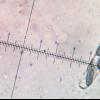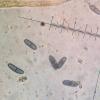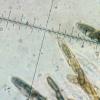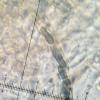
18-12-2025 21:17
Pol DebaenstThe identification took me to Byssonectria deformi

15-12-2025 07:09
 Danny Newman
Danny Newman
indet. Rutstroemiaceae sp. on unk. fallen leavesMc

19-12-2025 10:10
Patrice TANCHAUDBonjour, récolte réalisée en milieu dunaire, a

18-12-2025 17:23
 Bruno Coué
Bruno Coué
Bonjour,je serais heureux d'avoir votre avis sur c

18-12-2025 18:07
Margot en Geert VullingsThese plumes were found on rotten wood.They strong

17-12-2025 18:35
 Michel Hairaud
Michel Hairaud
Bonjour à tous/Hi to everyone I am passing along

15-12-2025 15:48
 Danny Newman
Danny Newman
Melanospora cf. lagenaria on old, rotting, fallen

15-12-2025 15:54
 Johan Boonefaes
Johan Boonefaes
Unknown anamorph found on the ground in coastal sa

15-12-2025 21:11
 Hardware Tony
Hardware Tony
Small clavate hairs, negative croziers and IKI bb
I've found this ascomycete on a dead lying spruce wood
I think it's Endoxyla parallela. But with amyloid apical ring? Can you confirm if this correct ?
Thanks.
Best Regards
Pavol

Endoxylina is a possibility but more information is needed.
You should first make a vertical section of ascomata and check if they are immersed under the surface and arranged in linear rows.
Asci of Endoxyla do have an apical ring but inconspicuous and inamyloid. It can be slightly stained in Congo red.
Ascospores of Endoxyla have a minute germ pore at one end, you should check this in heated chloral-lactophenol at high magnification. If your preparation is not thin and clean you won't see it!
Ascospores dimensions are likewise useful for identification at species level.
Best,
Jacques





